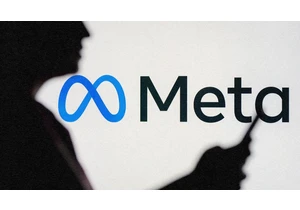Complacency can be a company’s downfall, says Sonos CEO Patrick Spence. “There are some people who are explorers, versus those who are builders, who incrementally make the products better and better—and you need to have both in your organization,” he says. “You need to protect the exploration efforts. I spend a lot of time protecting those innovation efforts at Sonos.”
On this week’s Most Innovative Companies podcast, Spence details why organizations should embrace innovation even when they don’t need to. “I have the experience of having lived through, and put my blood, sweat, and tears into 14 years of building BlackBerry and seeing what happens when you’re not continuing to push yourself outside your comfort zone,” Spence says.
“You have to be mindful and you have to be aware of what’s happening in the competitive dynamic, but you also have to be careful not to just react,” he says. “You have to know who you are, what customers you’re serving, where your strengths are, and play against that.”
That’s the proactive energy he’s brought to Sonos since 2012, now a $2.5 billion public company—including a willingness to consistently embrace discomfort and “get out of the house,” launching new products and pursuing collaborations with brands like Audi and Ikea, which, as he puts it, made people at Sonos “internally uncomfortable.”
Every innovator faces the same dilemma—knowing when to change and push forward versus staying the course. When finances are good or it looks as though easy times lie ahead, it often feels more comfortable to avoid what might seem like “unnecessary” innovation.
Spence began his career at what he calls a “small Canadian company” called Rim, and over the course of 14 years was part of the team that launched the BlackBerry and built an $80 billion global business that employed 17,000 people. Fast-forward to today, however, and all of that is gone.
“We started to rest on our laurels to some degree,” Spence says. Both the brand and the business were strong, but BlackBerry got caught up in trying to compete with products from a hardware standpoint—including launching its first touchscreen product, the Storm—and then later hesitated when it came to going wide with its software, choosing to keep BlackBerry Messenger proprietary.
“We ran into a classic innovator’s dilemma, where half the company wanted to keep BlackBerry Messenger proprietary to sell more hardware, and the other half recognized that no, this is an opportunity to pivot and become the standard and leader in instant messaging and communication,” Spence says.
His experience at BlackBerry clearly informed much of what he is doing at Sonos, and is the reason why—even as Sonos has successfully positioned itself as the leading at-home audio experience company—he is now pushing for further innovation.
Listen to the episode for the full interview.
You can listen and subscribe to Most Innovative Companies on Apple Podcasts, Stitcher, Spotify, or wherever you get your podcasts.
Autentifică-te pentru a adăuga comentarii
Alte posturi din acest grup

Every now and then, you run into a tool that truly wows you.
It’s rare—especially nowadays, when everyone and their cousin is coming out with overhyped AI-centric codswallop tha

Tesla released its quarterly earnings report on Tuesday, its first since the company’s chief executive, Elon Musk, took up residence in the Trump White House and immediately began trying to fire f

There’s never a dull day in the world of weight-loss medication. This week brought new restrictions on compounded GLP-1 medication, the cheaper, copycat versions of brand-name drugs that tel

In December 2023, I wrote an article exploring Apple CEO Tim Cook’s most likely successors, because t

“Meta profits, kids pay the price,” was the message delivered by dozens of grieving families at the doors of Meta’s Manhattan office on Thursday.
Forty-five families traveled from

The world’s auto industry is getting a shake-up from Chinese automakers that

There’s Blue Sky and then there’s Bluesky.
Blue Sky, a paper goods company
